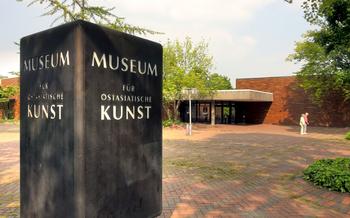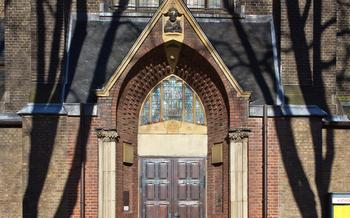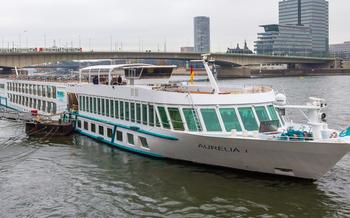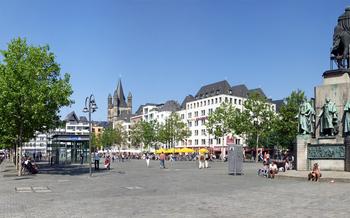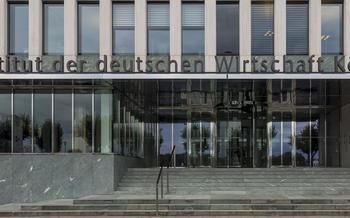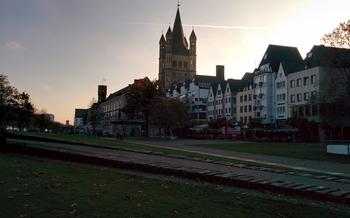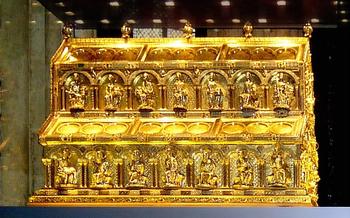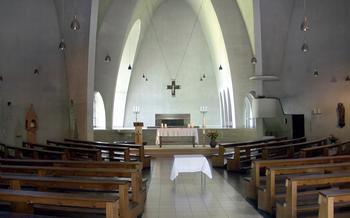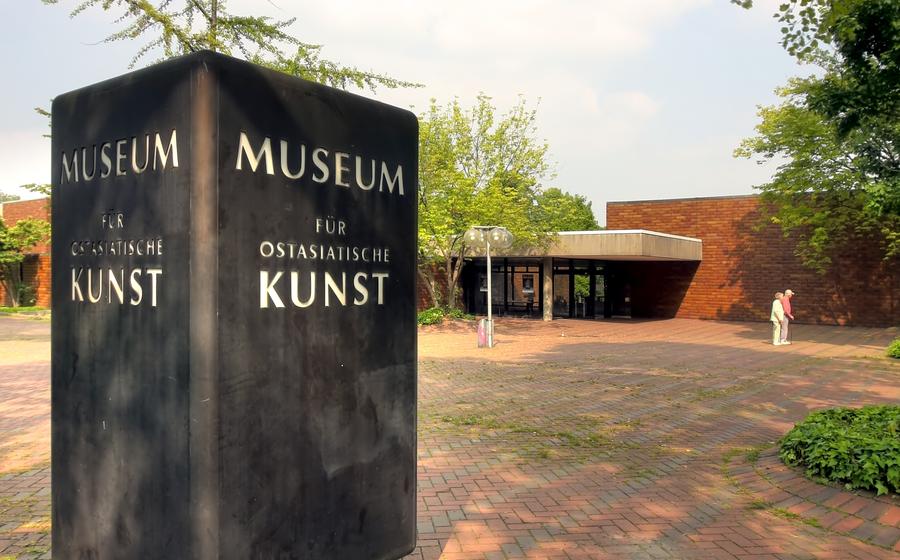
Museum for East Asian Art
- Cologne's Museum for East Asian Art: A Journey into Asian Cultures
- Navigating the Museum's Layout
- Exploring Chinese Art and Culture:
- Korean Art: A Blend of Tradition and Innovation
- Southeast Asian Art: A Tapestry of Diversity
- Contemporary East Asian Art: Breaking New Ground
- Educational Programs and Workshops
- Museum Café and Shop
- Accessibility and Facilities
- Photography and Social Media
- Insider Tip: Hidden Gems and Secret Tours
- Location and Transportation
- Nearby Attractions and Itineraries
Cologne's Museum for East Asian Art: A Journey into Asian Cultures
Nestled in the vibrant city of Cologne, the Museum for East Asian Art stands as a beacon of cultural exchange and appreciation. Founded in 1913, this renowned institution houses a treasure trove of East Asian art, spanning various countries and historical eras. With its impressive collection of Chinese, Japanese, Korean, and Southeast Asian artifacts, the museum offers a captivating journey into the diverse artistic traditions of the East.
The museum's extensive collection includes exquisite paintings, sculptures, ceramics, textiles, and more, each representing the unique cultural heritage of its respective region. Visitors can marvel at the intricate brushstrokes of Chinese calligraphy, the vibrant colors and bold lines of Japanese ukiyo-e prints, the delicate porcelain and celadon wares of Korea, and the intricate textiles and carvings of Southeast Asia. The museum's collection is a testament to the rich artistic legacy of East Asia, showcasing the remarkable creativity and craftsmanship that have shaped these cultures for centuries.
Beyond its impressive collection, the Museum for East Asian Art is also committed to promoting cultural understanding and education. Interactive exhibits, educational programs, and guided tours provide visitors with a deeper insight into the historical, philosophical, and religious contexts of East Asian art. The museum strives to foster a dialogue between East and West, encouraging visitors to appreciate the beauty and diversity of Asian cultures and to recognize their profound contributions to the global artistic landscape.
Navigating the Museum's Layout
Navigating the Museum's Layout:
The Museum for East Asian Art is spread over three floors, each dedicated to a different region or period of East Asian art. To make the most of your visit, it's recommended to plan your route beforehand. Start with the ground floor, which houses the Chinese art collection. Here, you'll find stunning calligraphy, paintings, and sculptures from various dynasties. Don't miss the interactive displays that provide insights into Chinese festivals, customs, and cuisine.
The first floor is dedicated to Japanese art. Here, you'll be captivated by the exquisite woodblock prints, ukiyo-e paintings, and ceramics. Interactive exhibits on the Japanese tea ceremony, flower arrangement, and traditional arts offer a deeper understanding of Japanese culture. Look out for iconic works by renowned artists like Hokusai and Hiroshige.
Finally, head to the second floor to explore the art of Korea and Southeast Asia. The Korean collection includes diverse paintings, sculptures, and ceramics, while the Southeast Asian collection showcases a tapestry of textiles, sculptures, and artifacts from various countries. Interactive exhibits on Korean calligraphy, hanbok fashion, traditional music, Southeast Asian dance, music, and traditional crafts provide a glimpse into the region's rich cultural heritage.
Exploring Chinese Art and Culture:
The Museum for East Asian Art in Cologne boasts a rich collection of Chinese art and culture, providing visitors with a comprehensive insight into the nation's history, philosophy, and artistic traditions. Immerse yourself in the delicate strokes of Chinese calligraphy, marvel at the vibrant colors of traditional paintings, and admire the intricate details of intricate sculptures. Discover the profound influence of Confucianism, Taoism, and Buddhism on Chinese art, and explore the symbolism and motifs that define this unique cultural expression.
Interactive displays bring Chinese festivals, customs, and cuisine to life, allowing visitors to experience the richness of Chinese culture beyond the museum's walls. Participate in hands-on activities, watch traditional performances, and savor the flavors of authentic Chinese cuisine. Special events and workshops related to Chinese culture, such as calligraphy classes, tea ceremonies, and cooking demonstrations, offer a deeper dive into the diverse traditions of this ancient civilization.
Korean Art: A Blend of Tradition and Innovation
Delve into the fascinating world of Korean art at the Museum for East Asian Art in Cologne. Discover a diverse collection of Korean paintings, sculptures, and ceramics that showcase the country's rich history, spirituality, and artistic influences.
Gain insight into the unique characteristics of Korean art, including its vibrant colors, intricate brushwork, and symbolic motifs. Explore the themes of nature, religion, and everyday life that permeate Korean artistic traditions.
Interactive displays provide a deeper understanding of Korean calligraphy, the exquisite hanbok fashion, and the enchanting sounds of traditional Korean music. Experience the elegance and grace of Korean dance through captivating video presentations.
Don't miss the opportunity to participate in special events and workshops dedicated to Korean culture. Learn about the art of Korean paper folding, try your hand at traditional Korean calligraphy, or immerse yourself in the flavors of Korean cuisine through cooking demonstrations.
The Museum for East Asian Art offers a comprehensive journey through Korean art, providing a glimpse into the soul of this dynamic and vibrant culture.
Southeast Asian Art: A Tapestry of Diversity
The Museum for East Asian Art in Cologne also houses a remarkable collection of Southeast Asian art, showcasing the vibrant and diverse cultures of this region. Embark on a journey through the artistic expressions of countries such as Thailand, Indonesia, Cambodia, Vietnam, Malaysia, and the Philippines.
Marvel at intricate textiles adorned with traditional motifs, sculptures depicting mythical creatures and deities, and artifacts that tell stories of ancient civilizations. Learn about the unique artistic traditions of each country, influenced by Buddhism, Hinduism, Islam, and animism.
Interactive exhibits offer a glimpse into the region's diverse dance forms, captivating music, and traditional crafts. Discover the symbolism behind shadow puppet theater, the delicate art of batik, and the intricate craftsmanship of silver jewelry. Highlight the works of renowned Southeast Asian artists who have gained international recognition for their contributions to contemporary art.
Contemporary East Asian Art: Breaking New Ground
Cologne's Museum for East Asian Art also showcases innovative and thought-provoking contemporary East Asian art. This section of the museum offers a glimpse into the challenges and aspirations of modern East Asian artists. Interactive exhibits on digital art, video installations, and performance art provide visitors with a unique and immersive experience. The museum regularly hosts special events and lectures featuring contemporary East Asian artists, offering visitors an opportunity to engage with the artists and learn more about their perspectives.
The contemporary art collection at the Museum for East Asian Art challenges traditional notions of East Asian art and pushes the boundaries of artistic expression. Visitors can explore the works of established and emerging artists who are reimagining traditional art forms and using new technologies to create thought-provoking and visually stunning artworks. This section of the museum is a must-see for anyone interested in the latest trends and developments in East Asian art.
Educational Programs and Workshops
The Museum for East Asian Art offers a wide range of educational programs and workshops designed to engage visitors of all ages and deepen their understanding of East Asian cultures and traditions. These programs aim to promote cultural awareness, foster creativity, and provide hands-on experiences related to East Asian art and history.
Workshops and Lectures:
The museum organizes regular workshops and lectures conducted by experts in East Asian art, history, and culture. These sessions cover various topics, including Chinese calligraphy, Japanese tea ceremony, Korean traditional music, and Southeast Asian dance. Participants can learn from experienced instructors, ask questions, and gain insights into the nuances of East Asian art forms.
Guided Tours:
Guided tours are an excellent way to explore the museum's collection and learn about the significance and context of the exhibits. Knowledgeable guides lead visitors through the different sections of the museum, providing detailed explanations and answering questions. Guided tours are available in various languages and can be booked in advance or on-site.
School Programs:
The museum offers educational programs tailored to school groups of all ages. These programs focus on interactive learning experiences, hands-on activities, and creative workshops. Students can engage with East Asian art and culture through interactive displays, storytelling sessions, and art projects.
Mission to Promote Cultural Understanding:
Through its educational programs and workshops, the Museum for East Asian Art strives to promote cultural understanding and foster a sense of global citizenship. The museum believes that education is a powerful tool for bridging cultural divides and creating a more inclusive and tolerant society.
Tips for Booking Educational Programs and Workshops:
- Check the museum's website or contact the education department for a schedule of upcoming programs and workshops.
- Advance booking is recommended, especially for popular workshops and guided tours.
- Group discounts are available for educational institutions and organizations.
- Custom-tailored programs can be arranged for specific groups or interests.
Museum Café and Shop
After immersing yourself in the wonders of East Asian art, take a break at the museum's cozy café. Indulge in a delightful selection of beverages, including aromatic teas, freshly brewed coffee, and refreshing juices. Complement your drink with a tempting array of pastries, sandwiches, and snacks, inspired by East Asian flavors.
The museum shop offers a unique collection of East Asian-inspired gifts and souvenirs. Browse through a variety of items, including traditional crafts, replicas of museum artifacts, and contemporary art pieces. Discover exquisite jewelry, elegant scarves, and home décor items that capture the essence of East Asian culture.
Whether you're looking for a memento of your visit or a thoughtful gift for a loved one, the museum shop is sure to have something special. Take advantage of this opportunity to bring a piece of East Asia back home with you.
Accessibility and Facilities
The Museum for East Asian Art is committed to providing a welcoming and inclusive environment for all visitors. Wheelchair users and individuals with limited mobility can easily navigate the museum's spacious galleries and public areas. Elevators and ramps are available to ensure barrier-free access to all floors. The museum also offers wheelchairs for temporary use upon request.
Restrooms are conveniently located throughout the museum, including accessible restrooms equipped with grab bars and spacious stalls. Lockers are available for visitors to store their belongings securely while exploring the exhibits. Free Wi-Fi is accessible throughout the museum, allowing visitors to stay connected and enhance their museum experience.
For visitors with visual impairments, audio guides are available in multiple languages, providing detailed descriptions of the exhibits. Large-print guides and tactile models are also available upon request to facilitate a deeper understanding of the artworks.
The museum's staff is dedicated to assisting visitors with any special needs or requests. Visitors can approach the information desk or contact the museum in advance to arrange for specific accommodations or guided tours tailored to their requirements.
Photography and Social Media
Capture and Share Your Museum Experience
Enthusiastic photographers are welcome to capture the beauty of the exhibits and the museum's architecture through their lenses. Remember to respect the museum's guidelines regarding flash photography and tripods to ensure a peaceful environment for all visitors. To make the most of your photo opportunities, consider bringing a wide-angle lens to capture the grandeur of the larger exhibits and a macro lens for close-up details of intricate artworks.
Share your museum experiences with the world on social media using the designated hashtags. Connect with fellow art enthusiasts, share your favorite exhibits, and tag the museum (@MuseumEastAsianArt) to be featured on our social media channels. We love seeing your unique perspectives and interpretations of our collection.
Insider Tip: Hidden Gems and Secret Tours
Unlock Exclusive Experiences
To delve deeper into the museum's treasures, consider booking a private guided tour or a personalized experience. These exclusive tours offer a unique opportunity to explore the museum's hidden gems and gain insights into the curatorial process. Expert guides will lead you through the collection, sharing captivating stories and revealing the secrets behind the artworks.
For an unforgettable experience, inquire about behind-the-scenes tours that take you to restricted areas of the museum, such as the conservation studio or the storage facilities. These tours offer a glimpse into the inner workings of the museum and provide a rare opportunity to see artworks that are not on public display. Whether you're an art aficionado or simply curious to learn more, these exclusive experiences will leave you with lasting memories of your visit to the Museum for East Asian Art.
Location and Transportation
The Museum for East Asian Art is strategically situated in the heart of Cologne, offering easy access via public transportation. The address is Ubierring 40, 50678 Köln, Germany.
To reach the museum by public transport, take the U-Bahn (subway) line 16 or 18 to the Ubierring stop.
Alternatively, you can take bus lines 132, 133, or 140 to the Ubierring/Museum für Ostasiatische Kunst stop.
For those arriving by car, there are several parking options nearby. The Parkhaus Ubierring is just across the street from the museum and offers convenient parking spaces.
Bike rental services are also available in Cologne, allowing you to explore the city's bike lanes and reach the museum easily. Take advantage of the "KVB Rad" bike-sharing program or rent a bike from one of the many private bike rental shops in the city.
After immersing yourself in the world of East Asian art, take some time to explore the surrounding area. The Rheinauhafen district, with its modern architecture and picturesque harbor views, is just a short walk away. Stroll along the Rhine River or visit the Schokoladenmuseum (Chocolate Museum) for a sweet treat.
Nearby Attractions and Itineraries
A visit to the Museum for East Asian Art can be easily combined with other cultural and historical attractions in Cologne. Just a short walk away, you can explore the stunning Cologne Cathedral, a UNESCO World Heritage Site that is renowned for its Gothic architecture and breathtaking stained glass windows. Take a leisurely stroll along the scenic Rhine River and admire the historic bridges that connect the city's two sides.
For art enthusiasts, the nearby Wallraf-Richartz Museum offers a comprehensive collection of European art from the Middle Ages to the 20th century. The Museum Ludwig, housed in a striking modern building, showcases a diverse range of contemporary art, including works by Andy Warhol, Roy Lichtenstein, and Gerhard Richter.
If you're looking for a unique cultural experience, head to the Chocolate Museum, where you can learn about the history and production of chocolate, and even create your own chocolate bar. For a taste of local history, visit the Cologne City Museum, which offers fascinating insights into the city's rich past, from its Roman origins to its modern-day status as a vibrant cultural hub.
To plan a full day of cultural exploration, start your day with a visit to the Museum for East Asian Art, followed by a stroll to the Cologne Cathedral. Take a break for lunch at one of the many charming cafes or restaurants in the Old Town, before continuing your journey at the Wallraf-Richartz Museum or the Museum Ludwig. End your day with a relaxing stroll along the Rhine River, taking in the city's beautiful skyline as the sun sets.
